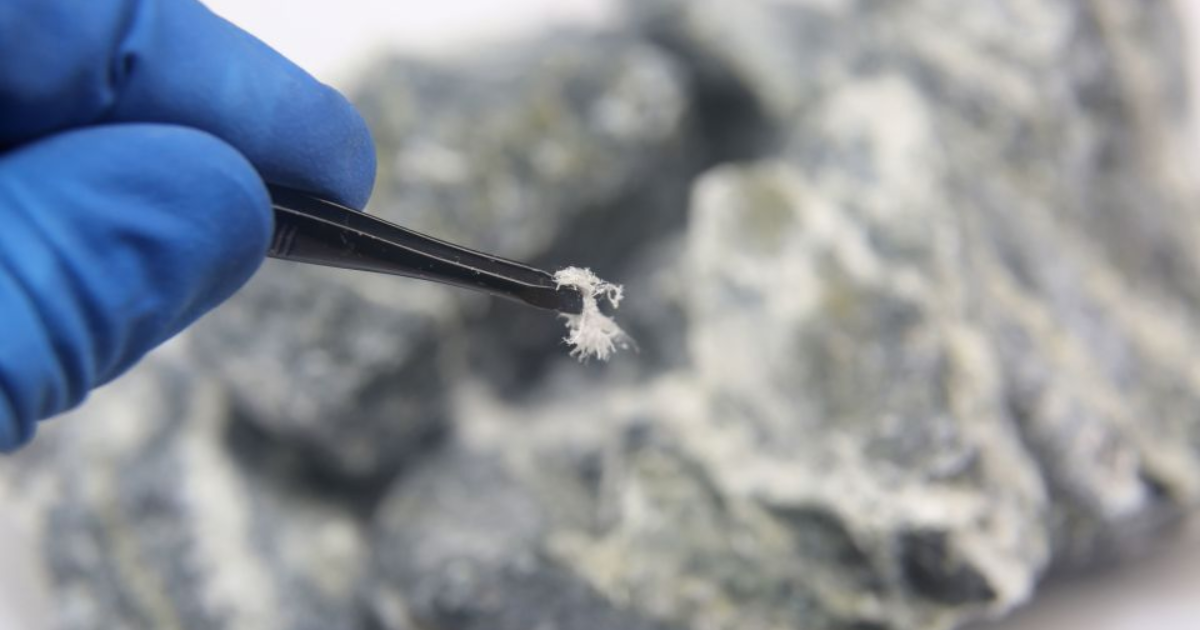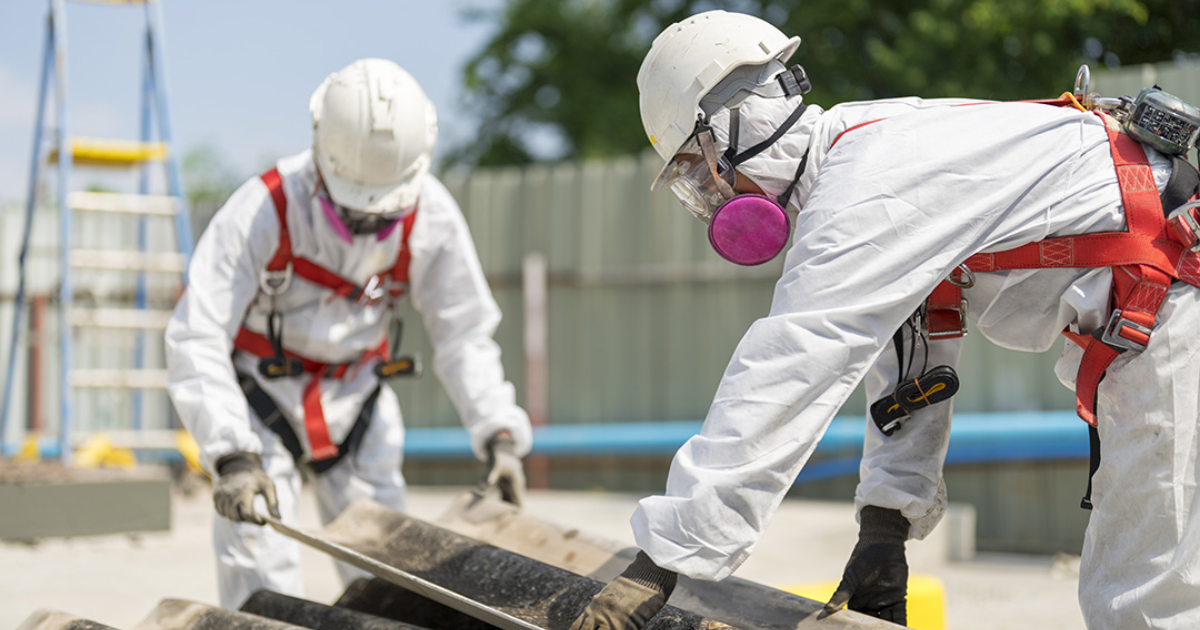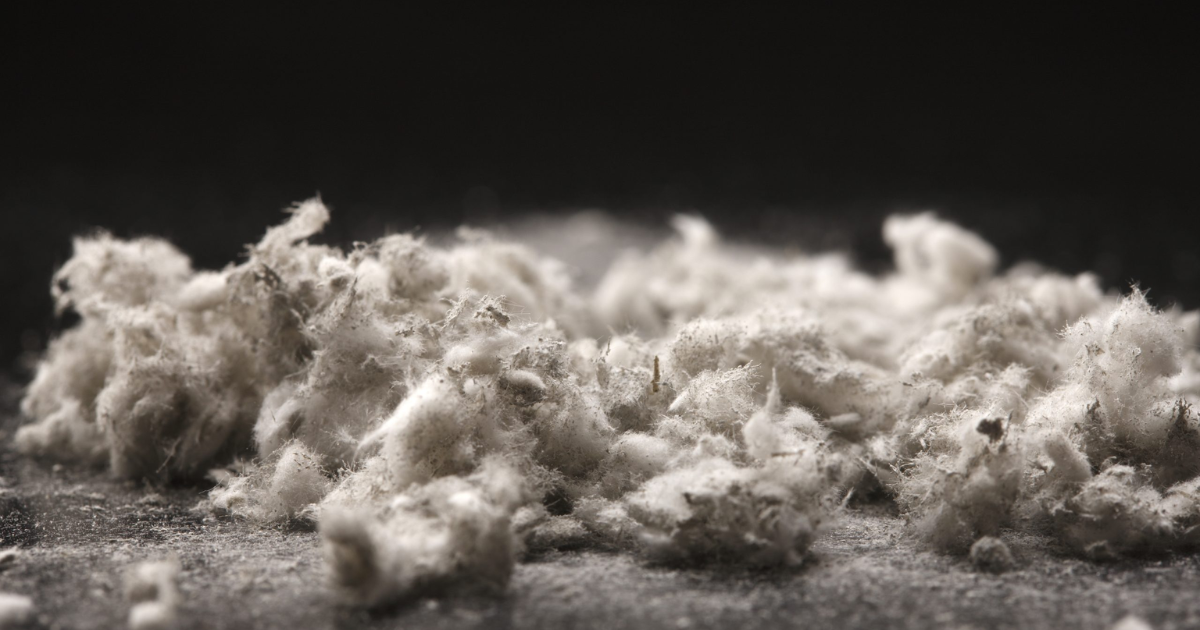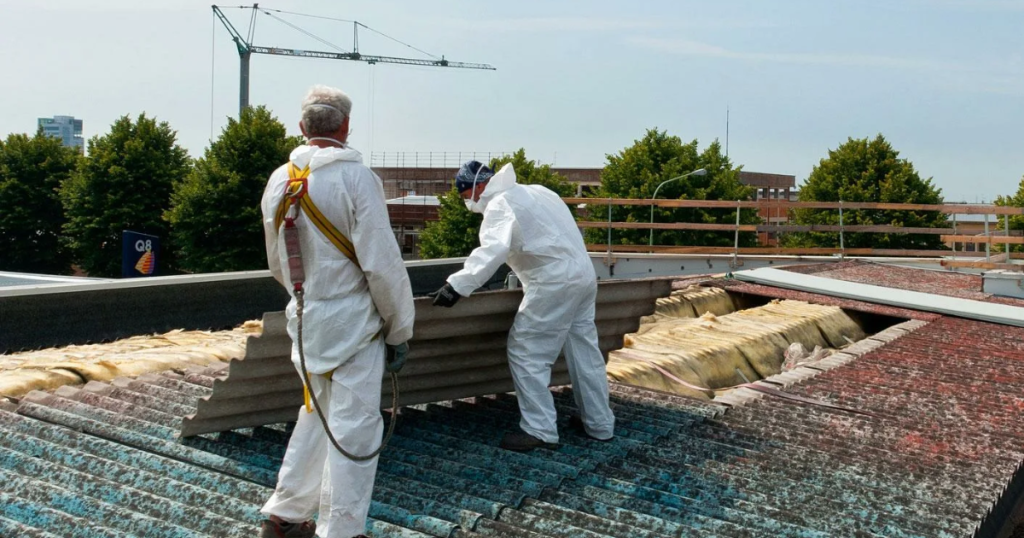Back in the day, asbestos was a builder’s favorite. They are strong, fire-resistant, and cheap. It showed up everywhere, from insulation and roofing to floor tiles. But here’s the problem: when disturbed, asbestos releases microscopic fibers that can seriously harm your lungs, leading to diseases like mesothelioma and lung cancer. That’s why asbestos removal abatement is no small matter.
It’s not a job for amateurs. Trained professionals use strict safety procedures to handle and remove asbestos safely, preventing exposure. Whether it’s a home, school, or office, the goal is to make the space safe again. This article explains when asbestos removal is necessary, how the process works, and how long asbestos abatement takes.
What Is Asbestos?

Asbestos is a natural mineral with tiny, durable fibers. It was once a go-to material in construction. Builders used it for fire resistance and insulation. You’d find it in walls, tiles, and pipes.
But it has a dangerous side. When disturbed, asbestos releases fibers into the air. Breathing these fibers can cause serious health problems, like lung cancer or mesothelioma. That’s why old buildings with asbestos need careful handling. Removal is often the safest choice to keep people healthy.
Why is Asbestos Removal Necessary?
Asbestos isn’t safe when it’s disturbed. Old buildings often have asbestos in walls, floors, or ceilings. If these materials crack or break, tiny fibers escape. Breathing those fibers can harm your lungs. Serious diseases, like cancer, can develop years later. Renovations or demolitions can stir up asbestos, too. That puts workers and residents at risk. Removing asbestos prevents these dangers. It keeps everyone safe and ensures buildings meet health regulations.
Removal is critical to protect people and meet safety rules. Here’s why it’s necessary:
- Health Risks: Breathing asbestos fibers can cause lung cancer or mesothelioma. These diseases often appear years after exposure.
- Damaged Materials: Cracked or broken asbestos in walls, tiles, or pipes releases fibers. This puts everyone nearby at risk.
- Renovation Hazards: Construction work can disturb asbestos. Workers and residents face danger without proper removal.
- Legal Requirements: Many regulations demand asbestos removal. This ensures buildings are safe for use.
Removing asbestos eliminates these risks. It keeps people healthy and buildings safe.
How Does Asbestos Removal Work?

Asbestos removal ensures safety through a meticulous process. Licensed professionals follow strict steps to eliminate harmful fibers. This protects occupants and complies with regulations. Below is the detailed, step-by-step method to make buildings asbestos-free.
Step 1: Inspection and Assessment
The process starts with a thorough inspection. Certified experts, like Crown Asbestos Removal in Canberra and NSW, examine walls, tiles, and pipes for asbestos. They carefully collect small samples. These are sent to labs for testing.
Results confirm asbestos’s presence and condition. Then, specialists assess risks to decide if removal is necessary. This vital step ensures the plan is precise and keeps everyone safe by targeting only hazardous materials.
Step 2: Plan the Work
A solid plan is essential for safe removal. Experts outline which materials must go. They detail safety measures to protect workers and occupants. Next, they secure permits, as regulations often require them.
Authorities are notified to ensure compliance. This step organizes every detail, from tools to timelines. A well-crafted plan prevents mishaps. It sets the stage for a smooth, hazard-free asbestos removal process.
Step 3: Prepare the Area
Proper setup keeps asbestos fibers contained. Workers seal the work zone with thick plastic sheets, install special air filters to trap dust, and post warning signs to block unauthorized entry.
A decontamination area is built for cleaning gear and suits. This careful preparation stops fibers from escaping. It protects nearby spaces and people. The result is a secure workspace ready for safe asbestos removal.
Step 4: Remove Asbestos
The removal process demands precision. Workers wear protective suits and respirators. They wet materials to keep fibers from floating. Using special tools, they carefully extract asbestos from walls, pipes, or tiles. Every move avoids creating dust.
This controlled approach minimizes health risks. It ensures fibers don’t spread beyond the sealed area. The goal is to remove all hazardous materials safely, leaving the space clean and secure.
Step 5: Dispose of Waste
Asbestos waste needs careful handling. Workers pack it into sealed, labeled bags or containers. These are designed to prevent fiber leaks. The waste is then transported to approved landfills. Strict regulations guide every step of disposal. This ensures no asbestos escapes during transit. Proper disposal protects the environment and public health. It’s a critical step to complete the removal process responsibly.
Step 6: Clean and Test
Cleanup is thorough to eliminate any leftover fibers. Technicians use vacuums with HEPA filters to clear the air. They wipe down surfaces, floors, and equipment with wet cloths. Next, air and material tests are performed to check for asbestos traces. Levels must be below safety regulations. This rigorous process confirms the area is clean. It ensures the space is safe for use before workers leave.
Step 7: Get Final Approval
The final step verifies safety. An independent inspector examines the site. They check for any remaining asbestos. Air and surface tests confirm the area is clean. If results meet strict standards, a clearance certificate is issued. This document proves the space is safe. Workers then dismantle their setup. The building is ready for use, free of asbestos hazards.
These steps make sure asbestos is handled safely. They protect everyone and keep buildings healthy.
How Long Does Asbestos Abatement Take?

Asbestos abatement timelines vary depending on the project’s scope and complexity. Small jobs might take a few hours, while large-scale removals can span weeks.
Several factors influence the duration, and understanding them helps set realistic expectations.
- Project Size: Removing asbestos from a single room is quicker, often 1-3 days, than tackling an entire building, which may take weeks.
- Asbestos Type and Condition: Friable (crumbly) asbestos requires extra care and slows the process. Non-friable materials, like intact tiles, are faster to handle.
- Site Preparation: Setting up containment barriers and negative air systems adds 1-2 days, especially for large or occupied buildings.
- Regulatory Requirements: Inspections, permits, and air quality tests can extend timelines by a few days to ensure compliance.
- Cleanup and Clearance: Thorough cleaning and final air testing typically add 1-2 days to confirm the area is safe.
Most residential projects wrap up in 3-7 days, but complex commercial jobs may take longer. Hiring experienced professionals ensures efficiency and safety without cutting corners.
What Are Safety Measures and Regulations?
Asbestos abatement is risky, so strict safety measures and regulations protect workers and residents. These rules stop harmful asbestos fibers from spreading. Here’s what keeps the process safe and legal.
- Trained Workers: Only licensed professionals with special training handle asbestos. They know how to avoid fiber release. For example, Crown Asbestos Removal’s certified team in Canberra and NSW uses expert skills to avoid fiber release and keep everyone safe.
- Protective Gear: Workers wear respirators, disposable suits, and gloves to stay safe from asbestos dust.
- Sealed Work Areas: Plastic sheets and air machines seal the area, trapping fibers and keeping them from spreading.
- Air Testing: Tests before and after work ensure no asbestos fibers remain in the air. This confirms safety.
- Legal Rules: Laws, like those from the EPA in the U.S., require permits, proper disposal, and inspections. Breaking rules can lead to fines.
These steps and regulations ensure asbestos removal is safe and meets strict standards. Hiring experts guarantees the job is done right.
Challenges and Considerations For Removing Asbestos
Removing asbestos is tough and needs careful planning. Many challenges can slow the process or raise risks. Here are the main issues to consider.
- Health Risks: If inhaled, asbestos fibers can cause lung cancer or mesothelioma. Workers need strict safety gear, like respirators, and sealed areas to avoid exposure. Even tiny fibers can harm health years later, making caution critical.
- High Costs: Abatement is pricey. Hiring trained pros, renting special equipment, and disposing of waste safely cost thousands. For example, a small home project might run $2,000-$5,000, and large buildings cost much more.
- Time Delays: Permits, inspections, and air tests take days. Big or damaged areas, like old factories, can stretch projects to weeks. Unexpected issues, like hidden asbestos, add more time.
- Hidden Asbestos: Old buildings may hide asbestos in walls, pipes, or floors. Finding it needs costly tests, like X-rays or core sampling, and delays work until all areas are checked.
- Strict Laws: Rules, like EPA standards, demand proper steps, such as licensed contractors and safe disposal. Mistakes can lead to hefty fines, legal trouble, or health hazards for nearby residents.
These challenges make asbestos removal tricky. Planning and hiring experts like Crown Asbestos Removal, who deliver safe, certified services in Canberra and NSW, help tackle them efficiently and keep risks low.
Conclusion
Asbestos removal is vital to eliminating health risks from this dangerous material. Trained professionals follow strict steps—inspection, containment, safe removal, and disposal—to prevent harmful fiber exposure.
Timelines vary, and challenges like costs and hidden asbestos arise. With proper safety measures and regulations, abatement protects homes and buildings. Don’t try DIY; trust experts like Crown Asbestos Removal in Canberra and NSW for certified, safe abatement that keeps everyone healthy.
Frequently Asked Questions
Q. How do I know if my home needs asbestos removal?
Answer: Old homes, especially pre-1980s, may have asbestos in tiles or insulation. If materials are cracked or you’re planning renovations, get a certified inspector to check. Removal is needed if fibers can escape, risking lung cancer. Crown Asbestos Removal in Canberra offers expert inspections to keep you safe.
Q. Is asbestos removal safe for my family?
Answer: Yes, when done right. Pros use sealed areas, air machines, and protective gear to trap fibers. Air tests ensure no asbestos remains. Strict rules, like Safe Work Australia’s, keep everyone safe. Hire licensed experts to avoid risks and protect your family from harmful exposure.
Q. Why is asbestos removal so expensive?
Answer: Removal costs a lot due to trained workers, special gear, and safe disposal. Small jobs run $2,000-$5,000; big ones cost more. Tests, permits, and air checks add up, too. Paying for pros ensures safety and meets legal rules, avoiding health risks or fines.
